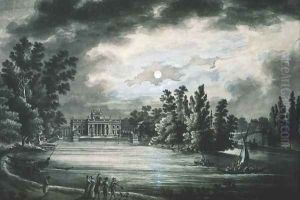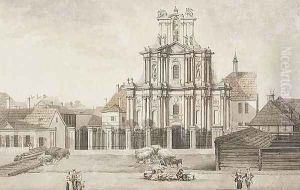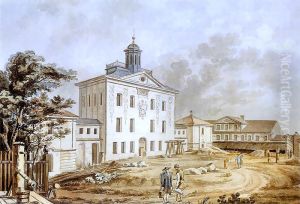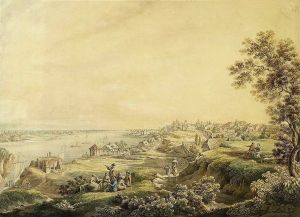Zygmunt Vogel Paintings
Zygmunt Vogel was a Polish artist, particularly known for his watercolors and drawings which depicted a wide range of subjects, including landscapes, cityscapes, genre scenes, and historical events. Born on June 15, 1764, in Warsaw, Poland, Vogel became one of the most prominent Polish artists of his time and contributed significantly to the cultural heritage of Poland.
In his early years, Vogel was educated at the Jesuit College in Warsaw. His artistic talents were recognized early, and he was subsequently taken under the wing of Marcello Bacciarelli, the court painter for King Stanisław August Poniatowski. Under Bacciarelli's guidance, Vogel honed his skills and developed a particular interest in documenting the world around him through his art.
Vogel's works were characterized by their meticulous detail and dedication to realism, which were significant at a time when Poland was undergoing political and social changes. His role as a documentary artist became especially important during the partitions of Poland when he captured scenes of Polish life and culture that were at risk of disappearing.
Throughout his career, Vogel held various positions, including teaching at the School of Fine Arts in Warsaw. He was also a member of the Commission of Religious Denominations and Public Enlightenment, which was responsible for the preservation of Polish cultural artifacts during a period of political upheaval.
Zygmunt Vogel's legacy includes a vast collection of drawings and watercolors that provide a visual record of Polish life in the late 18th and early 19th centuries. These works are still valued for their historical significance and artistry. Vogel's dedication to his craft and his love for his homeland are evident in each piece he created.
Vogel passed away on April 20, 1826, in Warsaw. His contributions to Polish art were not only in his own works but also in his influence on future generations of artists. Today, his artworks can be found in various museums in Poland and serve as an important part of the country's cultural history.



